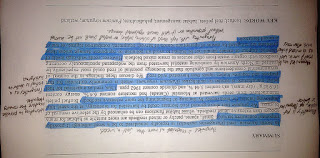 |
| Vaičekonytė, R., E. Kiviat, F. Nsenga, and A. Ostfeld. "An Exploration of Common Reed (Phragmites Australis)." Mires and Pea 13 (2014): 1-9. Web. 8 Oct. 2015. |
My primary goal for reading this paper was to learn about the place of Phragmites australis in the bioenergy industry. To acomplish this goal, I focused on the summary, introduction, and discussion because they contained various informative details that would not have been found in the methods or results section of the article.
I knew a handful of the words that were used in the paper, such as Biomass, Feedstock, Net Primary Productivity, Bioenergy, Biofuel, Cellulose, Rhizome Segments. On the contrary, I did not know the words Lignocellulose, Old World Haplotype M, Opined, Culms, Capitalisation, Photosynthetic Efficiency, Forb, Leguminous Vine, Vegetative Propagules, Native Biota, Reed Genets.
The major parts of information from the article can be summed up as the following points:
- Phragmites has been spreading rapidly, which reduces biodiversity, and summarily prompted action to be taken towards it’s removal.
- Utilizing Phragmites might put economic pressure into expanding its population, summarily decreasing biodiversity at various locations.
- There is a potential correlation between the traits that make a plant a good bioenergy crop and the traits that make a plant highly invasive.
- The major conflict with utilizing reed as a biomass crop is the evident problem with increasing biodiversity, but reducing biomass production, and vice versa.
- The levels of heavy metals and major elements in reed depend on the geochemical environment, pollution of the water and soil in which the reeds grew, and the season.
- Reeds are known to accumulate contaminants including selenium, mercury, copper, zinc, cadmium, chromium, iron, and lead.
All in all, low concentration of fun, high concentration of interesting; quite the useful article.
